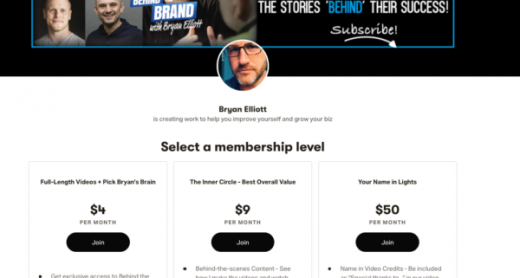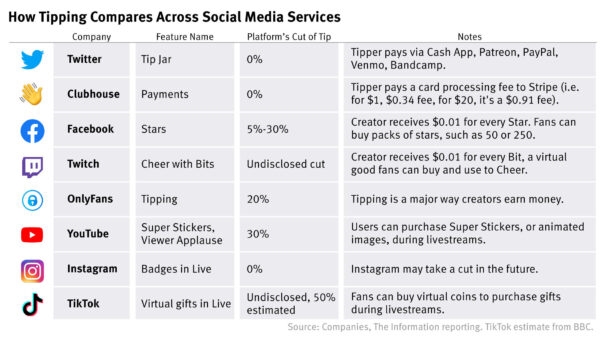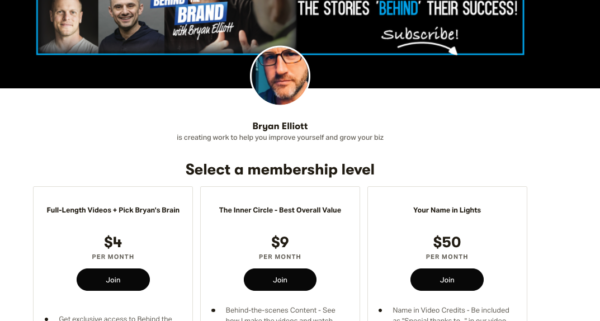The Creator Economy is Here – What That Means for Marketers & Creators
About 500 years ago, leading western economists advised those in power that to accumulate wealth, one must take whatever wealth already exists and hoard it. The choices were to take or be taken from.
During this age of mercantilism, we see wealthy men sending explorers, colonizers, and conquistadors to all corners of the earth looking for pre-existing wealth. That was before. Now, economists see wealth through a completely different lense.
Mercantilism worked on the presupposition of scarcity – there was only so much to go around. Today, wealth rewards value, and value is seen everywhere in the unprecedented production and consumption of compelling content.
We live in an age known as the Creator Economy. And even as finance experts scramble to valuate the wealth that content creators publish online, creators and brands are already cashing in.
What is the Creator Economy?
In a recent interview, Gary Vaynerchuk – a popular thought leader on branding and marketing – addressed the question, What business idea has the greatest potential for growth in the next decade?
“Becoming someone who can create content – written, audio, or video – for the Internet contextually. Because there will not be a human nor a business on earth in a decade that isn’t in need of a substantial creative department of making [great content].”
Gary V is talking about the Creator Economy, which refers to the massive influx in everyday digital creators using social channels to build online communities.
While most popular creators are prolific on social channels like Instagram, Facebook, TikTok, YouTube, Twitch, and Twitter, many are also podcasters and bloggers or industry experts on forums like Discord and Reddit.
The most high-profile example of the creator economy is influencer marketing, where social media power users leverage engaged audiences of 1,000 or more followers to promote their favorite products and causes.
“The path to becoming a creator is much different than it was a few years ago. You can now be purposeful about your approach. People are monetizing their platforms a lot sooner these days.” – Justin Moore, Founder of Creator Wizard
But the creator economy is even bigger than brand endorsements. What used to be a high-barrier-to-entry field (quality content production) is now accessible to people of any age who have the patience to master a social channel and create compelling, original content.
@scottseiss
The greatest strength of the creator economy is its ability to nurture authentic connections with fellow creators and non-creators using IRL (in real life) messages and social posts. Many creators compose blogs, videos, and audio that seems unremarkable. Yet somehow, whether by the creator’s tone, word choice, or eccentricity, their posts seem to resonate in ways that professionally-made content can’t.
Who are these creators?
Despite the IRL component to successful creator content, the industry possesses a fairly healthy mix of both professional and non-professional content marketers.
For many creators, their initial goal is not necessarily to create viral content. But by nature of their originality and endearing approach, they achieve popularity nonetheless.
Additionally, the definition of “popularity” has broadened significantly. Creators become pseudo-celebrities after garnering a following of 10,000 or more followers. Many brands are even targeting brand ambassadors from among creators with significantly lower follower counts.
This everyday influencer trend stands in stark contrast to the long-standing marketing technique of celebrity endorsements (i.e. Michael Jordan and Nike in the 1980s). Creators achieve the effect of celebrity endorsements while assuming the role of the friend or family member next door.
@orions_charge I mean, I could be wrong. But… this you? It me. #healingjourney #selfhealingjourney #spiritualtok #grief #lettinggo #breakuptiktok #singletiktok
As a result, creators (influencers) exist in nearly every industry, lifestyle, niche, and geographical location with access to the Internet and social media. This is perhaps the first era in history where youth of any economic status can visualize a profitable future based solely on their ability to resonate with like-minded social media users.
How Do Creators Make a Living?
Most creators launch their personal brand without high returns, at first. Even for many of those creators with incredible Cinderella stories, they often admit to hopping online for fun or to cope with COVID-19 lockdowns. Financial gain came much later.
As the world of IRL content grows, so do the ways in which creators not only nurture a side hustle but also make a decent living.
Brand Collaborations (Influencer marketing)
The most common version of a professional creator is the brand-influencer collaboration. Creators partner with their favorite brands to raise awareness, inform audiences, or drive conversions online.
Currently, influencer marketing is the most straightforward way to make a living as a creator. The trick, of course, is developing a following organically (instead of accepting under-the-table deals to purchase fake followers/engagements) and then to retain one’s authenticity while also showcasing products in a sponsored post.
To streamline the process, leading apps have developed social commerce features, such as in-shopping (Facebook, Instagram, and TikTok) and shoppable images (Pinterest and Google Shopping).
Influencers even go by a few different names, depending on the type of marketing campaign and compensation structure:
- Affiliates: Industry experts with an authoritative publication channel working on a referral fee or commission structure.
- Brand ambassadors: Exclusive brand champions with a highly-engaged online community posting in exchange for commissions, free product, or both.
- Customer advocates: Brand community members that have a history of brand loyalty and a desire to take that loyalty to the next level in exchange for various exclusive perks.
- Media producers (independent contractors): Talented photographers, videographers, or copywriters that can build eye-popping content at a modest rate for organic and/or paid social campaigns.
When partnering with brands, creators can enjoy cash payments at flat rates, commissions, retainer fees, free product gifts, or combination of all four.
Creator Tipping
In an effort to reward creators and enable fans to cheer their favorite creators online, many social channels are offering tipping options for users. While it’s unusual for social media to facilitate a straight cash-for-cash exchange, users can purchase stars, points, or stickers and give those tokens to creators (often during live events).
Creator tipping is not reliable or lucrative just yet. Social channels clearly want a cut, and it typically takes millions of tokens to convert to substantial dollars and cents. Being in its early stages, social platforms are likely to experiment with different options in the coming years. At present, it’s highly unlikely that creator tipping through social tokens will ever be a notable source of income generation for creators.
That said, most social apps do allow creators to publish addresses, Amazon wish list links, and cash app handles to those who want to send tips and gifts directly to the creator. Brands frequently use those addresses to send product gifts in exchange for user-generated content on behalf of their brand. But fans have also begun sending product or cash gifts to their favorite creators.
Patreon
The “tipping” option that makes far more sense for creators is the patreon model.
As the name implies, creator patrons can pay extra to enjoy exclusive content in the form of fans-only access, email newsletters, and more.
The patreon model also pulls the social media platform out of the equation. In other words, creators make what they make without social media taking a cut of their earnings. Using patreon services does typically incur a small fee, but those fees are minimal compared to the current creator tipping model.
Non-fungible Token Exchanges (NFTs)
Blockchain has now ventured into the digital arts. Cryptocurrency in the form of non-fungible tokens, or NFTs, offer official one-of-a-kind digital certificates for creator content.
Though serious investors are not sure what to make of NFTs just yet, creator content collectors are already investing in the ownership of original images, videos, and even Tweets!
Many questions remain unanswered, such as, What about how easy (and permissible) it is to copy popular content, so long as one cites the source? Or, What about the social media platform’s bid to own the original content?
Regardless, NFT investments are already in existence. And it’s not yet determined whether they represent a fad, trend, or the infancy of something far more spectacular for creators.
Entrepreneurial Intent
Many creators and influencers have leveraged their personal brand to promote their business brand.
Sometimes, influencers with long-standing brand relationships take those partnerships to the next level by collaborating with that brand on a new product line that bears the influencer’s name. Other times, creators nurture online audiences and introduce their own venture.
Not only are creators exploring the realm of entrepreneurial intent, but many celebrities are doing the same. For example, Ryan Reynolds has thrown his personal brand behind several business investments, including Mint Mobile and Aviation American Gin. Furthermore, he has consistently created viral Youtube content to promote those brands.
What Does the Creator Economy Mean for You?
Brands
Perhaps the most disruptive aspect of the creator economy is the fact that influencer endorsements look far more compelling than do self-promotional content, whether organic or paid.
That’s why many consider influencer marketing the most effective form of word-of-mouth marketing. Because creators provide both social proof and consumer influence, authentic product endorsements frequently help businesses of any size scale at a rapid pace.
The key to successful influencer marketing will always be brands nurturing direct relationships with creators that genuinely love that brand’s products/services. Without this brand affinity, brand-sponsored influencer posts leave a bad taste in the mouths of consumers.
“Influencer marketing is the most effective way to build a valuable brand—IF it’s done well. What’s the secret? Trust. When people trust someone’s endorsement of your brand, when they can sense the relationship is real, they believe it—and they’ll buy.” – GRIN, Authentic Influencer Marketing
Aspiring Creators
It’s no surprise to hear young people pestering their parents to launch their own social channels so that they can emulate their favorite creators online. Even older Millennials are trying their hand at doing more on platforms like Instagram and TikTok.
Not long ago, few would have recommended social media as a full-time career. But now, everything has changed. With some intentionality and professionalism, everyday content creators can build an online community, nurture that audience, and generate cash flow at the same time.
For most aspiring creators, this means blocking out the trolls and remaining consistent in doing the kind of content that they do best. To those that commit to mastering a social platform and loving the process of content creation, it seems as though a bright future lies ahead.
In Conclusion: Artificial intelligence is fueling the need for human intelligence and authentic content.
The creator economy throws another wrench into the conspiracy theorists’ ideas that AI will one day control the human race. But as the Harvard Business Review noted a few years ago…
“It’s these human capabilities that will become more and more prized over the next decade. Skills like persuasion, social understanding, and empathy are going to become differentiators as artificial intelligence and machine learning take over our other tasks.”
As it turns out, the creator economy thrives on these public displays of what it means to be human, emotionally intelligent, and – if need be – delightfully hilarious. Rote tedium and complex calculations are what AI seeks to eliminate – not originality amidst an evolving self-aware human race.
So as AI and machine learning get better at their jobs, the demand for compelling content will only grow. Marketers must examine their current and future relationship with the creator economy if they want to remain relevant in the 21st Century.
Digital & Social Articles on Business 2 Community
(28)




